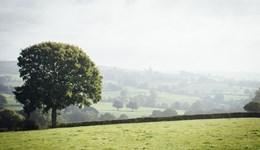Much has happened since the last report, and we provide revised data in three sector-specific reports: Beef & Lamb, Dairy, and Cereals & Oilseeds.
The removal of subsidies in the farming sector and the introduction of ‘public money for public goods’ is the backdrop for our review.
New agricultural policy will be based on correcting market failure rather than on the provision of subsidies and will reward farmers for the provision of public goods, something the market cannot do.
We expect the level of spending using this approach to be less lucrative than under the Common Agricultural Policy (CAP), and our analysis of the effect of SFI on net margins so far supports this view.
The report analysis covers England only, where policy changes are more advanced than in the devolved nations. However, the findings are equally applicable across the UK. As before, we worked with The Andersons Centre to develop the reports.
We examined data from the Farm Business Survey (FBS), matching pairs of similar farms from the top 25% and bottom 50% of performers (measured as farm income divided by associated costs, i.e. the return on turnover).
One might expect similar enterprises to have similar financial results, but this is not necessarily the case. In reality, the spread of performance between farms of similar size, sector and geography is extremely broad. The reasons for this are numerous.
What we aim to do in this report is highlight the factors that have the most significant impact on performance. The results are intended to help farmers raise their own performance, regardless of their current quartile.
The results are empowering. The factors that most influence performance are within farmers’ control.
They include:
- Business costs
- Levels of contracting
- Debt
- Participation in agri-environmental schemes
- Agricultural diversity
- Yields and output
- Attitude to change
There are nuances by sector, and these are brought to life using real-life examples. These highlight the challenges and pitfalls that farmers face daily. The intention is to show how to avoid being sidetracked or distracted and focus on those factors that will make a difference to farming businesses.
Read the sector reports below.



